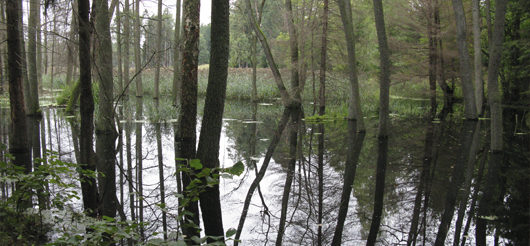Unasylva 251 - Forests: nature-based solutions for water
02 September 2021
02 September 2021
Water – drinkable, usable water – is likely to be one of the most limiting resources in the future, given the growing global population, the high water demand of most agricultural production systems, and the confounding effects of climate change. We need to manage water wisely – efficiently, cost-effectively and...
Impacts of forests and forestation on hydrological services in the Andes: A systematic review
10 December 2019
10 December 2019
Several Andean countries have planned to restore forest cover in degraded land to enhance the provision of multiple ecosystem services in response to international commitments such as the Bonn Challenge. Hydrological services, e.g. water supply, hydrological regulation and erosion mitigation, are particularly important to sustain the life of more than...
The Forest–Water Nexus: An International Perspective
05 December 2019
05 December 2019
Discussions on the relationships between forests and water have primarily focused on the biophysical nature of these relationships. However, as issues such as land degradation affect the ability of forests to provide water-related ecosystem services resulting in water insecurity, the human dimension of the forest–water nexus has become more evident....
A study of rapid hydrological appraisal in the Krueng Peusangan Watershed, NAD, Sumatra
30 April 2014
30 April 2014
The objectives of the Rapid Hydrological appraisal are to assess the hydrological situation from the perspective of multiple stakeholders: local ecological knowledge (LEK), public/policymakers ecological knowledge (PEK), and hydrologist/modeler ecological knowledge (MEK). Further, the recommendation from the application of RHA is to design a realistic approach in designing a reward...
This article had two purposes. The first was to measure and investigate the amount of fog and rain water collected by a sample of trees during the summer monsoon season in the mountains of the Dhofar region in the south of Oman.
The second purpose was to assess the potential of...
A review is presented of the literature on riparian vegetated buffer strips (VBS) for use in stream-water-quality restoration and limitations associated with their use are discussed. The results are also resented of recent investigations on the effectiveness of a forested and a grass vegetated buffer strip for reducing shallow...
Riparian buffers are vital elements of watersheds, primarily due to their protection of surface and ground water quality from impacts related to human land use. These vegetated buffers are complex ecosystems that provide food and habitat for unique plant and animal species, and are essential to the mitigation and control...

